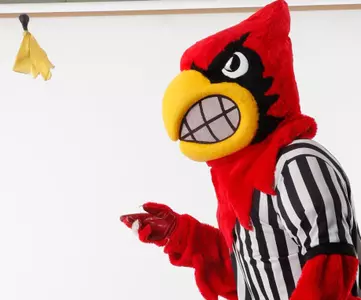
Did You Know...?
July 18, 2019 | Compliance
Did you know...?
Animated GIFs and interactive PDFs are considered by the NCAA to be types of video and audio materials. According to bylaw 13.4.1.8, an institution is prohibited from producing video or audio materials to show to, play for or provide to a prospective student-athlete if the video or audio material is created for recruiting purposes. For more information please see Bylaw 13.4.1.10 and NCAA ED Column on Recruiting Materials, Electronic Correspondence and Video/Audio Materials (9/21/2016)
13.4.1.10 Video/Audio Materials. An institution may produce video or audio materials to show to, play for or provide to a prospective student-athlete, subject to the following provisions: [D](Adopted: 1/11/94 effective 8/1/94, Revised: 1/9/96 effective 8/1/96, 12/12/06, 1/8/07, 1/16/10, 3/29/10, 4/28/11 effective 8/1/11, 6/13/11, 1/18/14 effective 8/1/14, 4/25/18 effective 8/1/18)
(a) The video/audio material may be posted to the institution's website;
(b) The video/audio material may not be personalized to include a prospective student-athlete's name, picture or likeness;
(c) The video/audio material may not be created by an entity outside the institution; and
(d) The video/audio material may only be provided to a prospective student-athlete via electronic correspondence, except as provided in Bylaw 13.4.1.10.1.
Recruiting Materials, Electronic Correspondence and Video/Audio Materials (I)
I
September 21, 2016
1
Pursuant to Bylaw 13.4.1 (recruiting materials and electronic correspondence), an institution shall not send electronic correspondence to an individual (or his or her parents or legal guardians) until September 1 at the beginning of his or her junior year in high school (for men's basketball, June 15 at the conclusion of the sophomore year in high school; for men's ice hockey, June 15 at the conclusion of the sophomore year in high school. If an individual attends an educational institution that uses a nontraditional academic calendar (e.g., Southern Hemisphere), an institution shall not send electronic correspondence to the individual (or his or her parents or legal guardians) until the opening day of classes of his or her junior year in high school.
Electronic correspondence (e.g., electronic mail, Instant Messenger, facsimiles, text messages) may be sent to a prospective student-athlete (or the prospective student-athlete's parents or legal guardians). There are no content restrictions on attachments to electronic correspondence, except that video and audio materials must conform to the requirements of Bylaw 13.4.1.8 (video/audio materials), may not be created for recruiting purposes and may not be personalized to include a prospective student-athlete's name, picture or likeness. Therefore, permissible video material (e.g., video that is not created for recruiting purposes) may be sent to a prospective student-athlete via electronic correspondence. The permissible video may be embedded in the correspondence (video plays upon opening the correspondence) or it may be attached (attachment must be opened after the correspondence is opened).
Bylaw 13.4.1.8 (video/audio materials) prohibits an institution from producing video or audio materials to show to, play for or provide to a prospective student-athlete if the video or audio material is created for recruiting purposes. Institutions should note that animation (e.g., animated GIF, interactive PDF) is video/audio material. Therefore, it is not permissible to create an animated GIF or other animated images to show to, play for or provide to a prospective student-athlete if such material is created for recruiting purposes.
In addition, if text, images or video are layered (e.g., superimposed in the background or foreground) for recruiting purposes with an otherwise permissible video, the resultant material constitutes video that has been created for recruiting purposes. Therefore, it is not permissible to show or provide such video material to a prospective student-athlete. For example, it is not permissible to layer the text of recruiting correspondence to appear in the foreground of an otherwise permissible video. However, it is permissible for the text of recruiting correspondence to appear separately from permissible video in electronic correspondence. It is also not permissible for an otherwise permissible video to play in the background of an image in electronic correspondence if the image and the video have been layered for recruiting purposes. However, if images or text have been layered with a permissible video (e.g., text or images layered with a general institutional video to describe or compare various institutional facilities) for reasons other than recruiting purposes, such video may be shown to and provided to a prospective student-athlete.
[References: NCAA Division I Bylaws 13.4 (recruiting materials), 13.4.1.4 (printed recruiting materials), 13.4.1.5 (electronic correspondence), 13.4.1.8 (video/audio materials); staff interpretations (9/14/16, Item a); and (9/21/16, Item a)]








